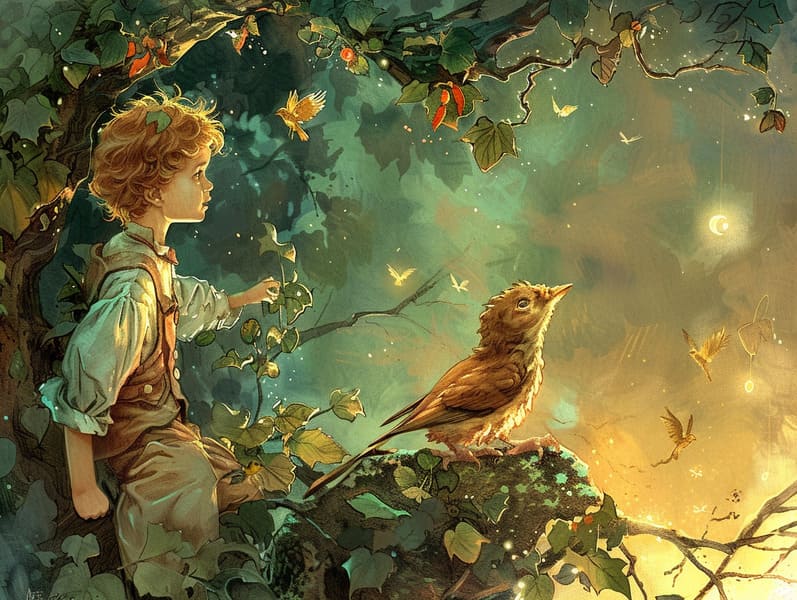The Rise of Best Fairy Tales with the Continued Magic.
The Rise of Best Fairy Tales with the Continued Magic.
Blog Article

Famous fairy tales have timeless appeal. These stories have been whispered from one generation to the next ages before they were ever documented. They arose from a variety of societies, including Western traditions. They were initially narrated among adults, often carrying themes and messages aligned with the societal norms and beliefs of the time.
The Grimm brothers, Jacob and Wilhelm (the Grimm brothers), were among the first to collect and release many of these beloved tales. Their published works, "Grimm's Fairy Stories," included stories like "Cinderella," "Hansel and Grethel," and "Little Snow White," which have since become cornerstones in the world of traditional fairy tales. Similarly, H. C. Andersen's whimsical tales, such as "The Story of the Little Mermaid," and "The Ugly Duckling," have enchanted hearts worldwide, cementing their place in the pantheon of iconic fairy tales.
Even though they are old, these stories remain as applicable as ever, especially as nighttime stories for kids. These whimsical stories are now available in different formats, including vibrantly illustrated books, fantastical animations, and digital fairy tales.
Their lasting presence can be traced to several delightful features:
Valuable Lessons: Traditional fairy tales often share important moral lessons. Stories like "The Story of the Boy Who Cried Wolf" teach the value of truthfulness, while "The Story of the Tortoise and the Hare" point out the benefits of persistence and humility. These narratives offer the young clear distinctions between truth and falsehood, molding their moral compass in a kind yet important way.
Kindness and Comprehension: Old fairy tales frequently present beings facing difficulties and adversities, fostering young listeners to understand with their struggles and applaud their triumphs. For instance, "The Story of Beauty and the Beast" highlights the merit of looking deeper to see the inner self of a soul, enhancing compassion and appreciation.
Cultural Perception: Many timeless fairy tales are imbued with the cultural contexts from which they were born. Engaging with these fairy tales can provide illuminating insights into different traditions, advancing a sense of cultural awareness and acknowledgment.
Inventiveness and Fantasy: The fantasy-filled elements in fairy tales—magic wands—kindle children’s visions and dreams. These narratives bring readers to enchanted realms, activating innovative dreams and a sense of enchantment that persists a lifetime.
Timeless fairy tales are not only entrancing but also pedagogical. They act as entrancing tools in promoting various intellectual and emotional capacities in children. When classic fairy tales are told out loud, they develop language proficiency by presenting new language and sophisticated sentence structures. This practice also strengthens auditory skills and attentiveness, as little ones remain attentive, keen to see what happens next.
Furthermore, analyzing the themes and characters of ancient fairy tales can sharpen analytical skills and thinking skills. Kids are instructed to detect patterns, anticipate outcomes, and get cause and effect. These conversations also advance young readers articulate their thoughts and feelings, cultivating their emotional intelligence.
In today’s digital era, the abundance of digital storybooks has made these stories more acquirable than ever. Websites and online apps give wide arrays of classic fairy tales that can be experienced or listened on anytime, anywhere. Fairy tales recited are particularly favored, sharing an entertaining method for the young to delight in these charming stories. Narrated books and read-aloud videos lead characters and settings to life, often augmented by bewitching harmonies and musical scores that enhance the tale-telling adventure.
The persistent attraction of old fairy tales lies in their ability to alter to current eras while preserving their central values. Contemporary adaptations of these tales often highlight more different protagonists and modern settings, making them familiar to today’s audience. However, the key lessons of bravery, benevolence, and fair-mindedness remain unchanged, continuing to move readers of all ages.
Classic fairy tales also offer a sense of coziness and familiarity. They impart a well-ordered narrative with a recognizable beginning, middle, and end, often coming to a close with the closure of conflicts and the triumph of good over bad. This certainty can be reassuring for children, proffering a sense of reliability in an unpredictable world.
Ancient fairy click here tales continue to enchant and train new generations, maintaining their mystique and significance in modern society. As bedtime stories for kids, they grant access to a perfect blend of wonder and wisdom, enriching moral values, empathy, and creativity. The prevalence of digital fairy tales and the commonness of fairy tales narrated promise that these traditional narratives remain available to new generations.
By keeping and divulging these tales, we continue to cherish the rich tapestry of lore and cultural heritage. Whether you are perusing a vividly illustrated book, enjoying a cyber library, or hearing an sound book, the majesty of traditional fairy tales is always within reach. These fairy tales emphasize of the timeless power of fairy tales and its ability to tie us across time and space.
No matter if you are exploring a beautifully illustrated book, discovering a virtual library, or listening on an read-aloud book, the allure of popular fairy tales is always within reach.
These narratives teach us of the undying impact of storytelling and its ability to tie us across epochs and places, establishing a link that fascinates and enlightens alike.